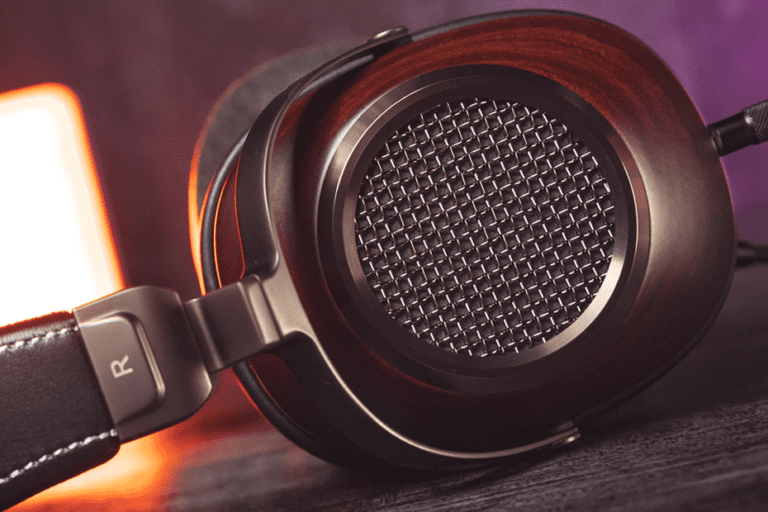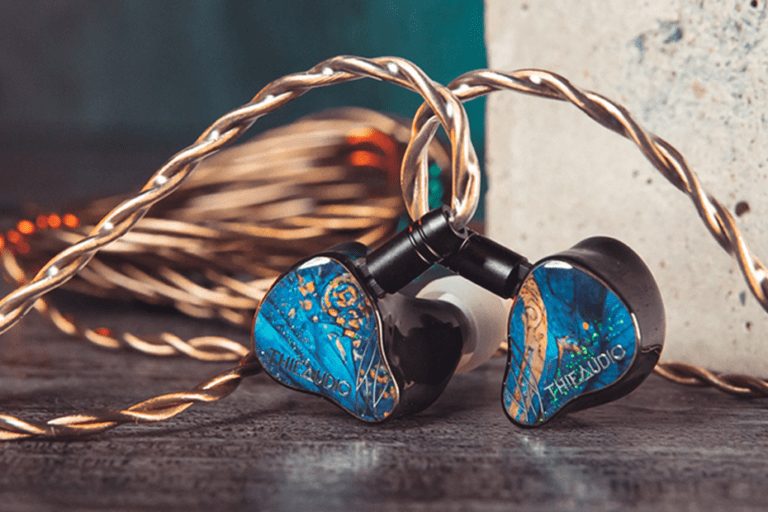Hello, I’m Alexander, and today we are checking Kinera Celest PhoenixCall tri-brid IEM, and I would like to say thanks to HIFIGO for providing the sample for this review. As always, I’m not paid to make this review or offer any specific opinion and all thoughts expressed in this review are my own. Celest is a sub-ordinary of Kinera and it’s my first time reviewing an IEM from this company. And as always I will leave all the links to the products in the description of this video.
Kinera Celest PhoenixCall features 5 drivers – a 7mm dynamic driver for bass, 2 BA – one for lower midrange and one for upper midrange, and 2 PZT micro planar (or flat panel) drivers for the treble. The IEMs feature beautiful resin shells with de-attachable cable, and come at a rather affordable price for such driver configuration.
Design & build
The IEM arrived in a medium-sized and quite elegant box. In the box, we have the IEMs, a de-attachable cable, 6 pairs of silicone ear tips, a storage case, a metal bookmark, and a manual. The impedance of PhoenixCall is 32 Ohms, and the sensitivity is 103db.
Kinera Celest PhoenixCall comes in two color schemes – Purple/Blue and Transparent. My sample is Transparent and it looks gorgeous. The shells are made of a medical-grade resin and as I have a transparent version I can clearly see the driver configuration. What is even more mesmerizing is the configuration of acoustic tubes inside the shell. The faceplates on my version have a different color (not sure if you can see the difference on camera) and have an illustration of flocking birds, which refers to the scene from an ancient Chinese myth “The Legends of Mountains & Seas”.
The nozzles are on the longer side and quite thick. The nozzles are also made from resin and have four sound bores on the top that are connected to the acoustic tubes inside the shell. As there is no filter or mesh at the end of the nozzle, you need to be careful and make sure you clean your ear tips regularly. The IEMs have a two-pin connector conveniently located on top of the shell and there is also one vent hole located next to it. The build quality is solid, and I need to point out that it’s one of the most beautiful IEMs I have seen in this price bracket.
Cable
The cable included with this IEM is good too. It’s a 1.2-meter-long silver-plated 5N copper 8-core cable. There is a 3.5mm connector on one end and 0.78mm 2-Pin connectors on the other end. All the connectors are gold-plated. The 0.78mm connectors have channel markings and in addition, the base of the right connector is red, which helps with channel navigation. The cable itself is average in thickness, with a metal splitter, metal chin slider, and pre-molded soft ear guides. It’s low in microphonics, looks and feels great, and the only downside was a strong chemical smell, which fortunately disappeared in a few days.
The Kinera Celest PhoenixCall is lightweight, despite the driver configuration, and thanks to its ergonomic shape and the long nozzle I was able to find a good fit & seal with stock ear tips instantly. If you have really small ears, the fit & nozzle diameter can be an issue, but if you have medium or large ears (like myself), finding a good fit will be easy. The IEM shells sit very naturally in my ears and I haven’t experienced any discomfort even during long listening sessions. The stock ear tips are still basic, so you might want to replace them. In any case, all my sound impressions in this review were with the stock ear tips.
Kinera Celest PhoenixCall sound overview
Now let’s talk about the sound. I would like to mention that all sound impressions on my channel are completely subjective so they should be taken with a grain of salt. PhoenixCall is quite easy to drive, and my Samsung Galaxy S10 was able to power them just fine. While the S10 DAC/AMP section is not the best, before throwing my main DAC/AMP combos in the game, I always perform the initial tests with my phone.
Kinera Celest PhoenixCall has quite a powerful bass for a 7mm driver, which a lot of people will appreciate. The bass is punchy, but it is a bit slow. Sub bass is more prominent than the mid bass adding nice rumble to the overall mix, and while mid bass in my opinion doesn’t lack punch, it’s a bit soft on some tracks. Though there is a minimal bass bleed into the midrange overall the bass has good control.
Midrange takes a backseat on this pair, and while on the initial tests, I was okay with it, as I went on spending more and more time with this pair, I started noticing some things in the midrange. The midrange has a good timbre, but it lacks details and energy. Due to such tuning, some instruments sound distant and appear in the background, and lack note weight as well. The upper midrange is able to improve this situation a bit, but I would still prefer if the midrange was a little bit more upfront and more detailed.
Enjoying this review useful? Read more IEM reviews here
The treble of Kinera Celest PhoenixCall is probably the best part of its tuning. It’s well-extended, airy, quite linear and detailed. It extracts a lot of details and nuances of the recordings, but at the same time, it’s not harsh or sibilant even at higher listening volumes. The treble also perfectly balances the low end of this IEM and compliments the overall tuning of PhoenixCall well. While it’s not the most analytical and detailed treble in this price range, due to the character of treble, even not-so-well-recorded material sounds quite rounded, yet detailed.
The soundstage is quite wide and tall. And this is another aspect where this IEM excels. Imaging is on point and I enjoyed this IEM both with my music and multiplayer games, where Kinera Celest PhoenixCall rendered the gaming sound landscape with a good accuracy and realism.
Pros
- Beautiful design
- Well-tuned tri-brid configuration
- Fun sound signature
- Light plastic shells
- Excellent fit and comfort
- Airy and detailed treble
- Wide soundstage
- and great price-to-performance ratio.
Cons
- Fit may vary (especially if you have small ears)
- The midrange lacks details and energy
- Bass can sound too soft on occasion
- and the carrying case neither corresponds to the price bracket, nor is spacious enough to properly hold the IEMs with the cable.
Overall my experience with the Kinera Celest PhoenixCall was positive. And while it doesn’t check all the boxes for me, I still recommend it to anyone looking for beautiful IEMs with a fun sound signature, good comfort, wide soundstage and affordable tribrid driver configuration.
And that concludes my review for today. If you want to see more content like this consider subscribing to my YouTube channel for future updates. Thank you for joining me, and until next time, goodbye!
** As an Amazon Associate I earn from qualifying purchases. Some of the links in my reviews are affiliate links, which means at no extra cost to you, I will make a small commission if you click them and make a qualifying purchase.


